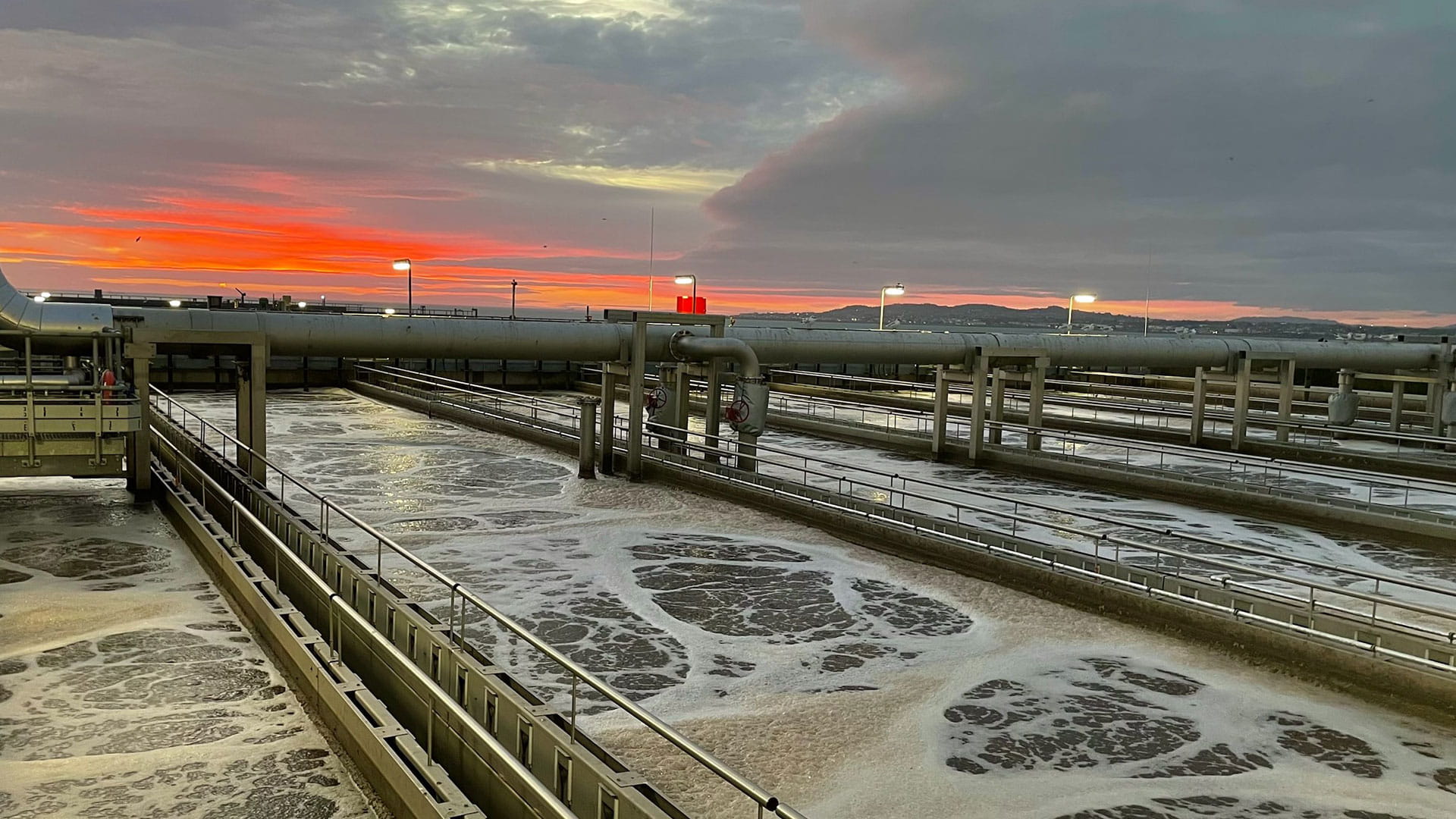Nereda® transforms the world of wastewater treatment with 100th plant
23-03-2023
Wastewater treatment has come a long way since its inception, and now, the game-changing biological wastewater treatment technology continues to disrupt the industry. Nereda®, the original aerobic granular sludge technology (AGS), is efficient, effective, and environmentally friendly. Royal HaskoningDHV has recently announced the sale of the 100th wastewater treatment plant equipped with Nereda technology in Fort Pierce, Florida USA.

Nereda technology was born out of a remarkable public-private partnership between Technical University Delft, Royal HaskoningDHV, STOWA, and various Dutch water authorities. Today, there are Nereda plants in 21 countries on six continents. The technology greatly reduces the energy footprint of wastewater plants and has saved a combined 58 million kWh of electricity to date by plants in operation. This reduction in energy usage is equivalent to avoiding 41,100 tonnes of CO2 emissions, which is the same amount of carbon sequestered by 48,639 acres (about twice the area of Manhattan) of US forest in a year. Additionally, operational Nereda plants have so far purified the amount of wastewater equal to what 6 billion people would generate in one day while showcasing success in some of the largest wastewater plants in the world.

As the original aerobic granular sludge technology, Nereda has transformed the way the world treats wastewater biologically. It’s no wonder that water companies wanting to save energy and reduce their carbon footprint embraced this biological wastewater treatment innovation.
“The 100th Nereda plant at Fort Pierce is a milestone representative of the global application and acceptance of this modern technology,” Joao concludes.
Royal HaskoningDHV owns the commercial license for Nereda. Its US licensee in North America, where the technology is marketed as AquaNereda®, is Aqua-Aerobic Systems, Inc. (AASI), which is responsible for the Fort Pierce project.
“The treatment plant at Fort Pierce is the 12th AquaNereda plant in North America where we are seeing tremendous traction for aerobic granular sludge treatment. Fort Pierce is a new build facility, serving a community of 140,000. The project is the culmination of a plan to relocate the wastewater treatment plant to protect the Indian River Lagoon, which is the most bio-diverse estuary in North America,” said James Horton, Vice President, Process Group of AASI. “This project is an excellent example of the benefits of AquaNereda in that the new plant was found to be 15 percent less expensive to construct and consumes 30 percent less energy to operate compared to the alternative technologies considered.”
Nereda works by significantly improving the century-old activated sludge process for treating wastewater. Nereda technology purifies wastewater in a similar way as activated sludge; however, rather than less dense bacteria flocs performing treatment, it creates conditions that cause these same bacteria to stick together and form dense granules. The granules provide a host for more intense wastewater treatment at a much faster pace than conventional activated sludge. Up to one meter in four minutes can be treated compared to one meter every hour for the active sludge process. This enables the process to meet strict compliance mandates while consuming up to 50 percent less electricity, in 75% less footprint than conventional aerobic sludge treatment processes with little or no chemical addition.
Nereda has become a game-changer through its efficient, effective, and environmentally friendly way of treating wastewater. Its versatile wastewater treatment approach has revolutionized how the world views the process. The technology has made a significant contribution to water companies' efforts to reduce their carbon footprint while providing the best treatment results.
Royal HaskoningDHV owns the commercial license for Nereda. Its US licensee in North America, where the technology is marketed as AquaNereda®, is Aqua-Aerobic Systems, Inc. (AASI), which is responsible for the Fort Pierce project.
“The treatment plant at Fort Pierce is the 12th AquaNereda plant in North America where we are seeing tremendous traction for aerobic granular sludge treatment. Fort Pierce is a new build facility, serving a community of 140,000. The project is the culmination of a plan to relocate the wastewater treatment plant to protect the Indian River Lagoon, which is the most bio-diverse estuary in North America,” said James Horton, Vice President, Process Group of AASI. “This project is an excellent example of the benefits of AquaNereda in that the new plant was found to be 15 percent less expensive to construct and consumes 30 percent less energy to operate compared to the alternative technologies considered.”
Nereda works by significantly improving the century-old activated sludge process for treating wastewater. Nereda technology purifies wastewater in a similar way as activated sludge; however, rather than less dense bacteria flocs performing treatment, it creates conditions that cause these same bacteria to stick together and form dense granules. The granules provide a host for more intense wastewater treatment at a much faster pace than conventional activated sludge. Up to one meter in four minutes can be treated compared to one meter every hour for the active sludge process. This enables the process to meet strict compliance mandates while consuming up to 50 percent less electricity, in 75% less footprint than conventional aerobic sludge treatment processes with little or no chemical addition.
Nereda has become a game-changer through its efficient, effective, and environmentally friendly way of treating wastewater. Its versatile wastewater treatment approach has revolutionized how the world views the process. The technology has made a significant contribution to water companies' efforts to reduce their carbon footprint while providing the best treatment results.